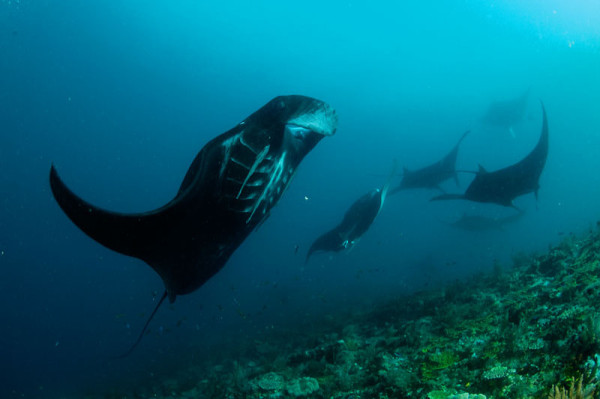A good World Oceans Day for Sharks and Manta Rays as they receive international protection
A landmark decision was made this past March at the last CITES Meeting of the Conference of Parties (CoP 16) when the member countries voted to list five species of sharks and manta rays on CITES Appendix II. This includes oceanic whitetips (Carcharhinus longimanus); scalloped hammerheads (Sphyrna lewini); great hammerheads (Sphyrna mokarran); smooth hammerheads (Sphyrna zygaena); porbeagles (Lamna nasus); and both species of mantas (Manta birostris and M. Alfredi).

This is no minor decision. The 178 countries that have signed CITES must now amend their national laws to make it illegal to import or export any part, piece or derivative of these species— including their fins—without CITES permits. International trade in these species without permits could result in penalties including fines or imprisonment. Before issuing CITES permits, countries will be required to determine that any trade in these species involves specimens or products that were obtained legally and from sustainable sources.
The effort to list vulnerable sharks on CITES began decades ago and proposals to list these sharks at CITES CoPs 14 and 15 failed. The votes at CoP 16 were successful, but they were very close—passing by only a few votes. Plenty of countries abstained or didn’t vote. The manta ray proposal on the other hand passed readily with 80% of the countries voting in support.
This doesn’t mean that these species are now safe from over-exploitation. Implementing and enforcing these CITES listings won’t be easy for any country. There is still a lot of heavy lifting to be done to help countries manage and enforce these CITES listings and ultimately conserve these species. But this is a heck of a great start.
WWF-Canada’s TRAFFIC and Wildlife Trade program will be working closely with Canadian authorities, the IUCN Shark Specialist Group and the WWF and TRAFFIC networks to ensure these listings are successful and effective. Doing so will not only secure the survival of these species, but will open the door to additional listings of vulnerable marine species in the future.
